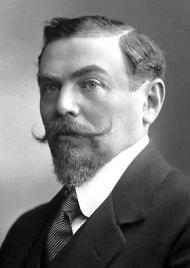The Einstein–Szilard or Einstein refrigerator is an absorption refrigerator which has no moving parts, operates at constant pressure, and requires only a heat source to operate. It was jointly invented in 1926 by Albert Einstein and his former student Leó Szilárd and patented in the US on November 11, 1930 (U.S. Patent 1,781,541). This is an alternative design from the original invention of 1922 by the Swedish inventors Baltzar von Platen and Carl Munters.
History
From 1926 until 1933 Einstein and Szilárd collaborated on ways to improve home refrigeration technology. The two were motivated by contemporary newspaper reports of a Berlin family who had been killed when a seal in their refrigerator broke and leaked toxic fumes into their home. Einstein and Szilárd proposed that a device without moving parts would eliminate the potential for seal failure, and explored practical applications for different refrigeration cycles. Einstein used the experience he had gained during his years at the Swiss Patent Office to apply for valid patents for their inventions in several countries, the two eventually being granted 45 patents in their names for three different models.
It has been suggested that most of the actual inventing was performed by Szilárd, with Einstein merely acting as a consultant and helping with the patent-related paperwork.
The refrigerator was not immediately put into commercial production, the most promising of their patents being quickly bought up by the Swedish company Electrolux. A few demonstration units were constructed from other patents.
Operation
The machine is a single-pressure absorption refrigerator, similar in design to a gas absorption refrigerator. The refrigeration cycle uses ammonia pressure-equalizing fluid, butane refrigerant, and water absorbing fluid, has no moving parts, and does not require electricity to operate, needing only a heat source, e.g. a small gas burner or electric heating element or even solar energy. In an Einstein refrigerator with the standard working fluids, a water-flow loop serves as an ammonia pump, and the ammonia-flow loop serves as a butane pump. Ammonia and water are suitable choices because ammonia is highly soluble in water and its solubility declines steeply with increasing temperature. Butane is a suitable choice for the refrigerant because it has a suitably low boiling point and is virtually insoluble in water.
On the cold side of a conventional refrigerator, a refrigerant evaporates at a temperature-dependent pressure, Prfr(Tlow). Evaporation absorbs heat from whatever is being cooled, and the vapor flows to a compressor. In an equivalent Einstein refrigerator, the refrigerant liquid evaporates at what is now a partial pressure Prfr(Tlow), mixing with a flow of ammonia vapor to form a gas with a total pressure near the system pressure: Prfr + Pamm = Psys. The mixture flows, not to a pump, but to an ammonia absorber.
On the hot side of a conventional refrigerator, a compressor raises the pressure of the refrigerant vapor, enabling it to condense at a relatively high temperature to deliver heat to an external heat exchanger. On the hot side of an Einstein refrigerator, an ammonia absorber raises the partial pressure of the refrigerant vapor to accomplish the same result.
The absorber works by removing ammonia vapor by dissolving it in water. As this happens, the gas mixture flows to maintain the nearly constant pressure Psys, and as a consequence, the partial pressure of the refrigerant, Prfr, can approach Psys. At this higher partial pressure, it can condense and deliver heat to an external heat convector, as in a conventional refrigerator.
The condensed refrigerant liquid cannot dissolve in water and, in the case of butane, it will float, making it easy to separate and return to the evaporator. Meanwhile, the ammonia/water solution flows to an ammonia generator, where the heat source that powers the refrigerator raises the temperature of the solution, driving out the ammonia and providing the ammonia vapor that is the other input to the evaporator.
This is the operating principle of the system. Practical implementations include other elements, such as means for contacting liquids and vapors, and so forth. The Einstein refrigerator has been described as "noiseless, inexpensive to produce and durable".
Present day
In September 2008 it was reported that Malcolm McCulloch of Oxford University was heading a three-year project to develop more robust appliances that could be used in locales lacking electricity, and that his team had completed a prototype. He was quoted as saying that improving the design and changing the types of gases used might allow the design's efficiency to be quadrupled.


























